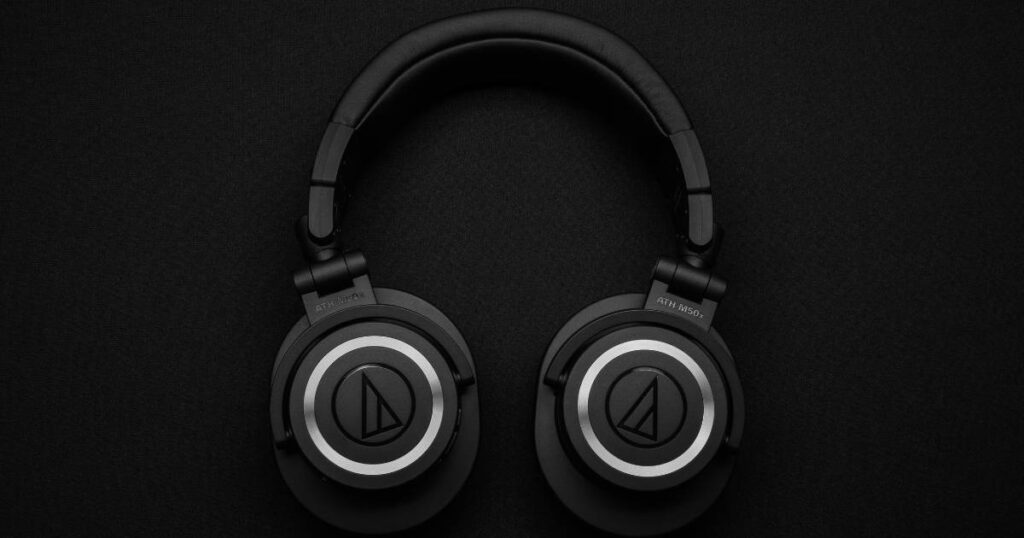
What should you look for when you buy new headphones? The first thing we look for in headphones is the quality of the audio. But is this enough with today’s technology?
The tech has improved a lot, especially in the realm of headphones. A lot of new features are gaining existence in the headphones. And it is daunting with so many headphone options on the market. So we will make a clear choice after reading this article.
So what is the purpose of buying new headphones? Whether it is only for listening to music and watching movies, or only for attending calls, gaming, travelling, going to the gym, etc., some tech freaks might want them for all these purposes. So let us look into the different types of headphones available on the market. We will walk through each category.
Different types of headphones
over-ear headphones or around-ear
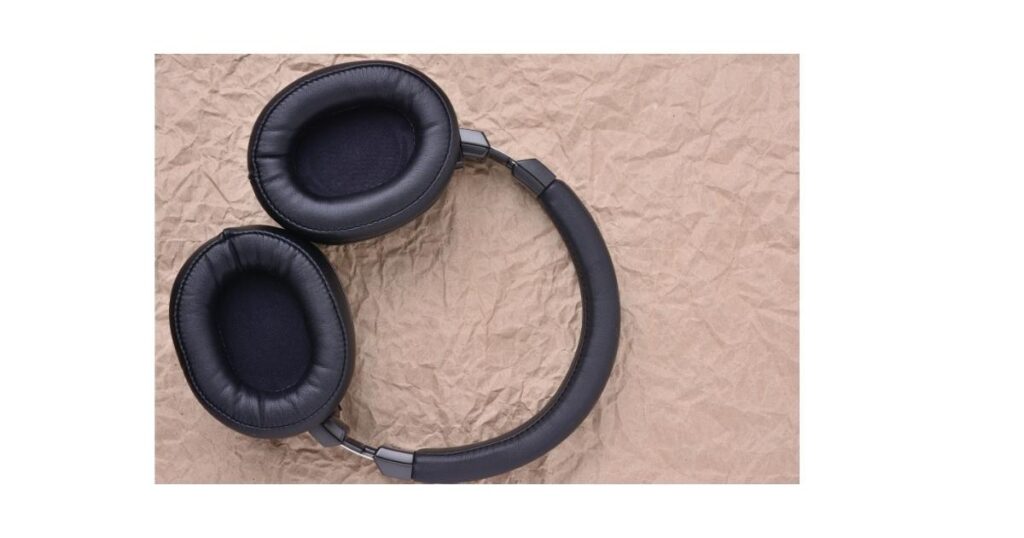
The name itself says that this covers the complete ear with padding on the headphones and has good isolation. Which means they block the outside noise to some extent. Well-designed
Pros
1) Over-ear headphones will be comfortable to wear.
2) These types of headphones have larger audio drivers, so the music sounds spacious and has a good extended-frequency response.
Cons
1) Prolonged usage might cause sweating in the ears.
2) The ear headphones are not portable enough.
Studio monitors are a subcategory in over-ear headphones

Studio monitors are a type of headphones that was made just for sound engineers who work in recording studios. Unlike regular speakers, they have a straight and accurate frequency response, which means they will reproduce sounds accurately and without any distortion. To find small details and flaws in records, you need to be very accurate. This helps you make smart choices during the mixing process. There are a lot of different sizes and configurations of studio speakers. Most of them come with built-in amplifiers and controls that can be changed to get the best sound quality in a range of studio settings. Studio monitors are not as good as consumer headphones because studio monitors don’t have artificial bass, which might not appeal to most consumers.
On-ear headphones (with smaller ear cups)
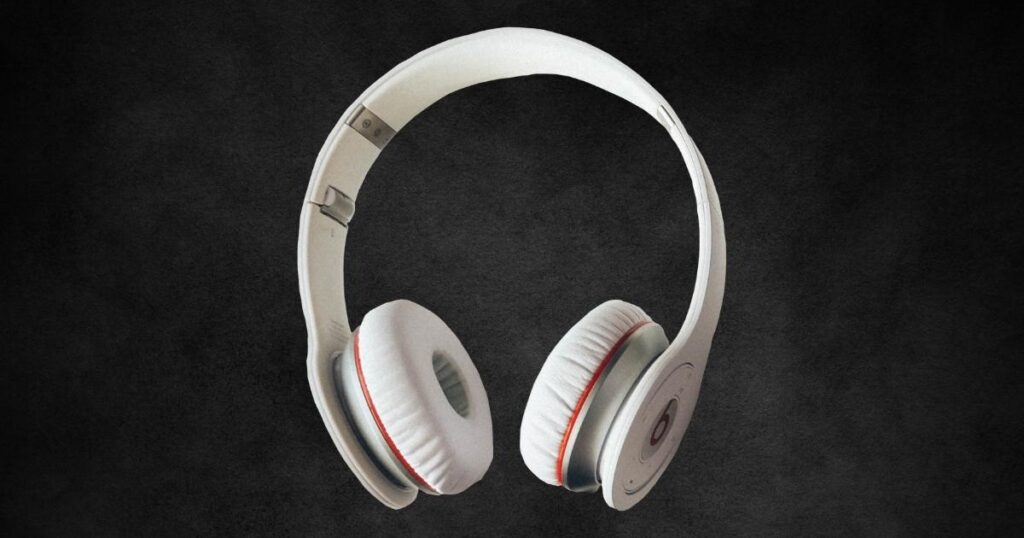
On-ear headphones are the portable version of over-ear headphones. Audio drivers are smaller, and their padding sits on the ear, which doesn’t cover the entire ear, which leads to less isolation.
Pros
Compact design helps them store easily while travelling, even though they are not as compact as in-ear buds.
Cons
On-ear headphones are not comfortable due to the lack of padding available due to the compact design.
The soundstage is not wider and more spacious compared to over-ear headphones.
In-ear headphones (Buds and pods)
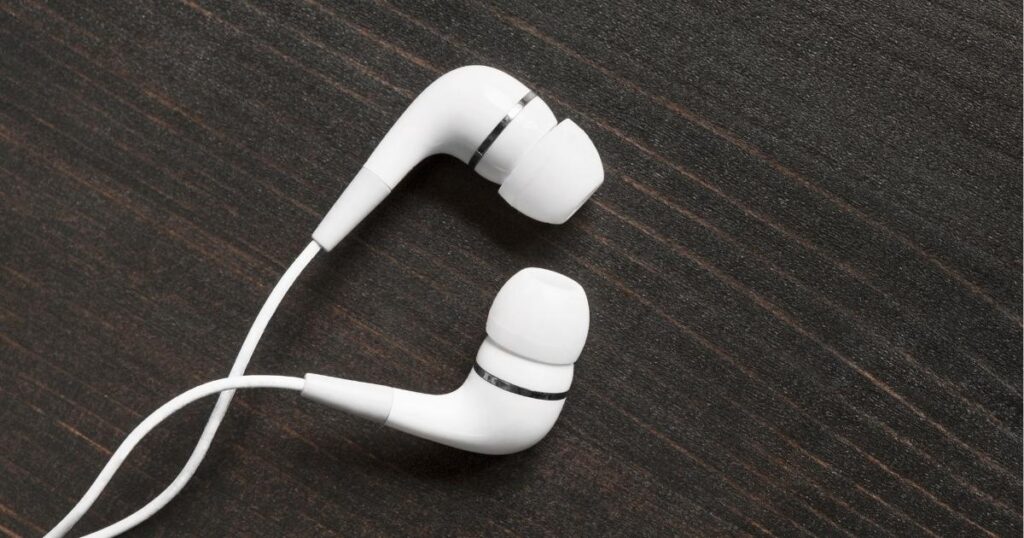
Nowadays, these are widely popular due to their compact design, which makes them great travel companions and for attending immediate calls. But if you are a critical listener and you want a wide sound stage, these are not as good as over-ear and on-ear. But these can be carried with you as a second alternative or as a backup for immediate needs.
Pros
It can be widely available at any price range in the market.
Compact and easy to travel and carry with you
Cons
It doesn’t have a wide sound stage compared to other types of headphones.
Not comfortable if you listen for a longer period.
Noise-cancelling headphones are mostly recommended for noisy environments and travelling.
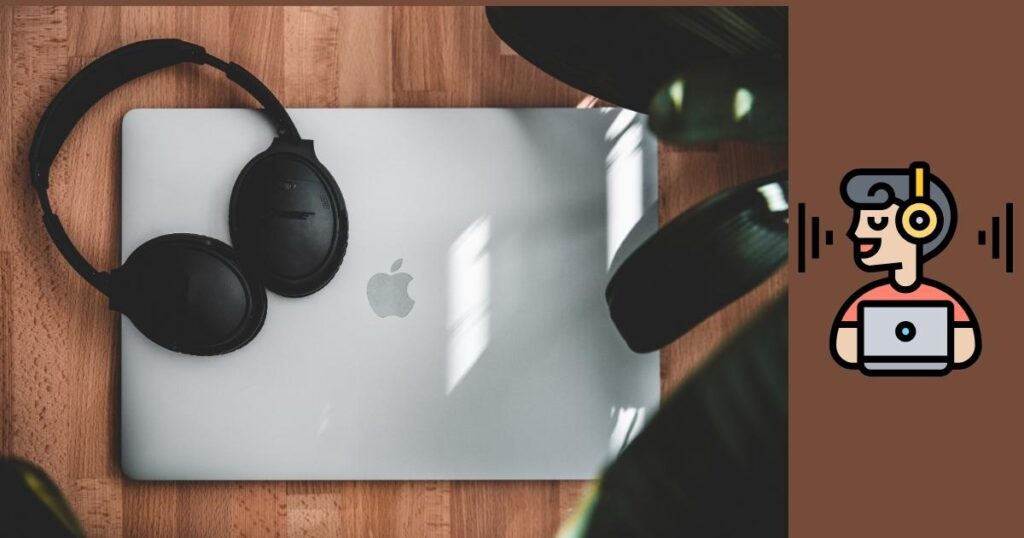
Noise cancelling is a feature in headphones but not a type of headphones.
There are two types of noise cancellation.
1: Active noise cancellation (ANC)
ANC is useful in cutting down on louder sounds like flight sounds, traffic sounds, etc. This feature is mostly useful when you are listening to music on flight or train journeys.
2: Environmental noise cancellation (ENC)
This feature reduces small environmental sounds that distract during important calls.
But this cannot cut down on heavy noise, unlike ANC.
This feature is mostly useful during calls.
So which one was better, ANC or ENC?
ANC was better in any situation, but when choosing a headphone, it’s best to go with both the features included in one headphone.
What is the difference between noise isolation and noise cancellation?
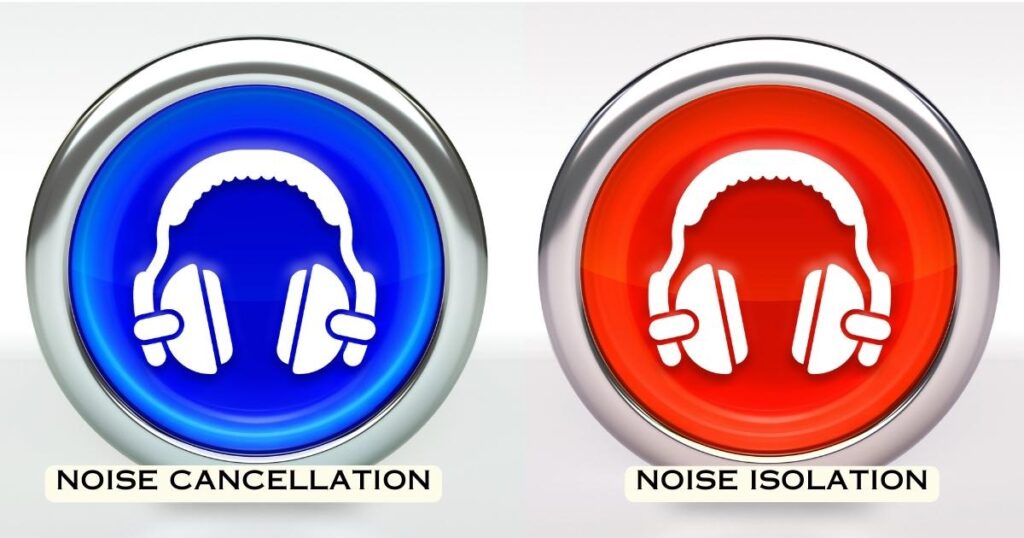
Noise-isolating headphones use materials like memory foam or silicone to passively block out external sounds, creating a physical barrier between your ears and ambient noise. In contrast, active noise-cancelling (ANC) headphones utilize technology to actively eliminate external noise. Equipped with built-in microphones, ANC headphones pick up ambient sounds and generate anti-phase sound waves to actively cancel out the noise. While noise-isolating headphones offer affordability and effective passive noise reduction, ANC headphones excel in actively eliminating a broader range of noises, making them particularly useful in environments with constant or dynamic background sounds.
Wired and wireless headphones, so which one should I choose?
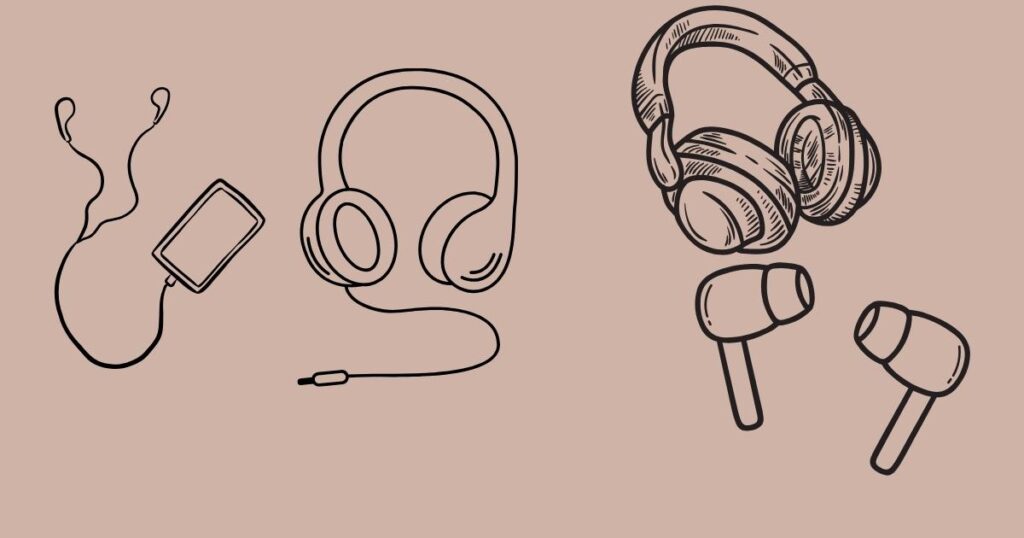
This depends on the type of device you use, the level of comfort you need, and your price range. Most of the old devices and MP3 players support 3.5 mm jacks. Most of the new devices have type-C ports and the latest Bluetooth support.
Comfort and minimalism are two factors to consider before considering wire and wireless.
If comfort is your priority without wires, you can go with the Bluetooth version of any over-ear, on-ear, or in-ear headphones at a high price compared to wired versions of Type-C and 3.5 mm jacks.
If you need minimal choice and don’t want to get worried about the batteries and chargers of headphones during travel, getting wired headphones is a better choice.
There are a lot of headphones on the market that come with both wired and wireless choices, with a detachable wire and Bluetooth, which gives you comfort in both worlds. If you need a wire-free connection, Bluetooth is available, and if they run out of batteries, you will have a wired connection. But you have to remember that this is only available in over-ear and on-ear
Models only.
Which Bluetooth versions do we have to consider for headphones?
1. Bluetooth 5.3: Though the latest version most of the devices do not have, Bluetooth 5.3 improves stability, dependability, interference, and power efficiency.
2. Bluetooth 5.2: This version is the previous version of the headphone Bluetooth version. It has a better range, transfer speeds, battery consumption, and multi-stream audio for simultaneous device connections than earlier generations.
Bluetooth headphone considerations:
Device compatibility: Make sure your headphones work with Bluetooth. Consider your needs, such as multi-device pairing, LE Audio codec support, or extended range.
Cost and availability: Newer versions may be scarcer or more expensive. Bluetooth 5.3 is the best headphone Bluetooth nowadays. The current Bluetooth protocol has various advantages over its predecessors, including Lower latency: Bluetooth 5.3 speeds audio data transfer from the source to headphones. This reduces sound lag, which is vital for gaming and watching videos. Bluetooth 5.3 provides a longer range than previous generations, so you may go farther without losing connection. Better connection: Bluetooth 5.3 resists interference and connection drops for more reliable listening. Bluetooth 5.3 supports LE Audio, a new audio codec for lower power consumption and higher-quality audio. In addition to these features, Bluetooth 5.3 is backwards compatible with prior Bluetooth versions, so your headphones can work with many devices.
How much battery life do headphones or earphones require?

The ideal battery life for headphones or earbuds depends on your usage patterns and preferences. Generally, most users find 8 to 12 hours of battery life sufficient for a day’s use, allowing for multiple listening sessions without needing frequent recharging. For wireless earbuds, especially those used during workouts or commutes, 4 to 6 hours of battery life might be satisfactory.
However, longer battery life is often desirable, especially for those who travel frequently or have extended work or study sessions. High-end models may offer 20 hours or more, sometimes with quick-charging features for added convenience. Keep in mind that variables like volume levels and usage conditions can affect the actual battery life. Ultimately, the right amount of battery life depends on your specific needs and how often you’re willing or able to recharge your headphones or earbuds.
Gaming headphones, so what do they offer?
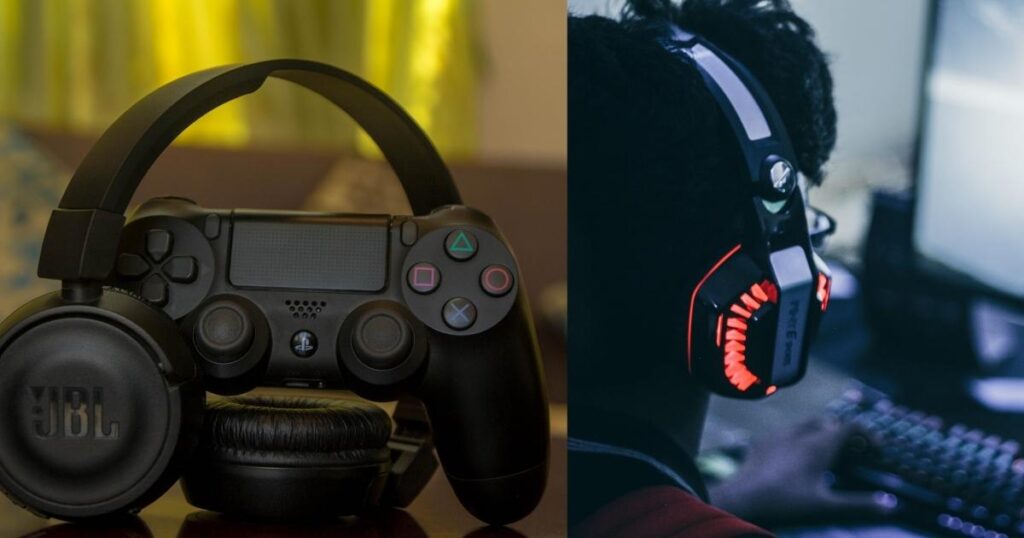
A gaming headset is nothing but an over-ear headphone with an external or inbuilt microphone and a dedicated visual appeal with LEDs and graphics. It gives you a good feel while playing with PlayStation, Xbox, or your mobile and system gaming.
Why do we need a gaming headset?
A dedicated gaming headset is essential for an enhanced gaming experience. These headsets offer superior audio quality with features like surround sound, providing immersive gameplay by capturing subtle in-game sounds. The built-in microphone facilitates clear communication, which is vital for teamwork in multiplayer settings. Designed for comfort during long gaming sessions, they boast adjustable headbands and ergonomic padding. Convenience is heightened with on-ear controls for volume adjustments and microphone muting. Gaming headsets often provide passive noise isolation, blocking external distractions. Their compatibility with various platforms, durable build, and specialized features such as customizable lighting and EQ settings make them a worthwhile investment. Overall, a dedicated gaming headset contributes to heightened audio-visual experiences, seamless communication, and prolonged gaming comfort.
Open headphones vs. closed headphones
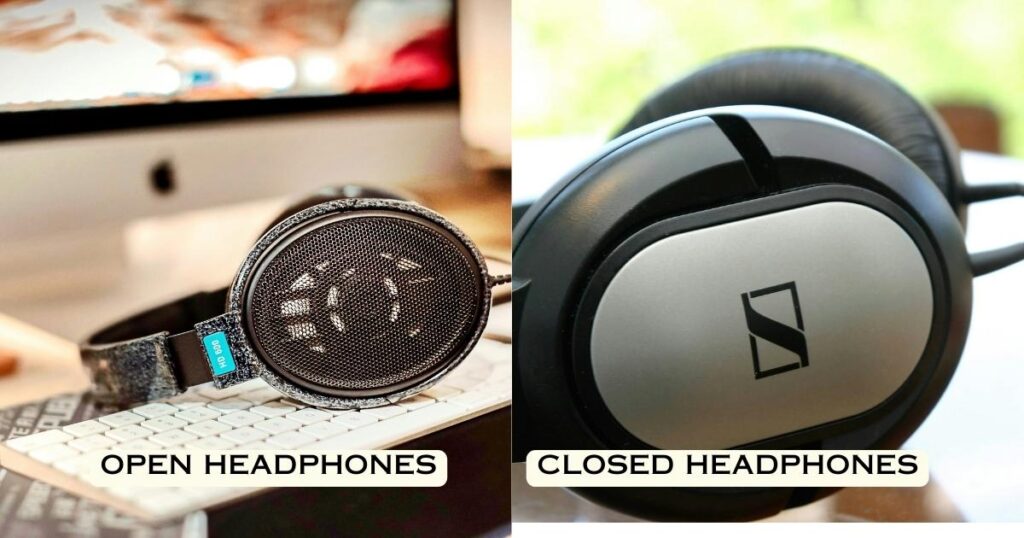
Choosing between open and closed headphones depends on your preferences and usage. Open headphones offer a more expansive soundstage, providing an immersive and natural audio experience. They excel at recreating a speaker-like atmosphere, but they leak sound, potentially disturbing those around you. Closed headphones, on the other hand, provide excellent noise isolation, making them ideal for public spaces or shared environments. Their closed-back design keeps the sound contained, ensuring privacy. While open headphones offer an airy feel, closed ones deliver a more intimate, focused sound. Consider the setting, your need for isolation, and your desire for either an open, spacious sound or a closed, intimate experience when making your choice.
Water and dustproof headphones
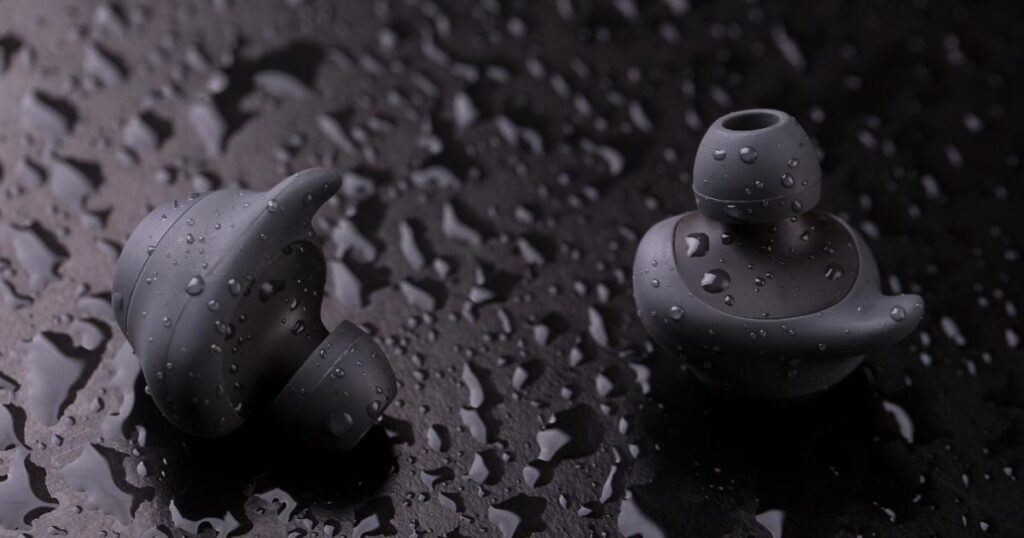
Waterproof headphones do not sound like an affordable value for some people, but gym freaks and athletes who sweat a lot definitely might need waterproof headphones. If they use normal earphones or headphones, they might get damaged due to water retention in the earphones, so they might need one. People who will be on adventure travel and move a lot to dusty places might also need dustproof proof. The most common water and dust-proof rating is IPX4.
Headphones for work and calls

If you speak a lot of calls and get involved in conference calls, all you need is headphones with a good microphone. There are a lot of dedicated headphones on the market for working purposes.
Headphones for good-sounding sleep
There are headphones specifically designed for comfortable sleeping. These sleep headphones are typically ultra-thin, lightweight, and designed to be worn while lying on your side. They often use flat, soft speakers that don’t protrude, minimizing discomfort when lying on your ears.
Headband-style headphones: These feature speakers embedded into a soft fabric headband, providing comfort for side sleepers.
Flat speakers: Some sleep-friendly headphones use very thin, flat speakers that don’t press into your ears or head.
Conclusion
Before buying headphones, go to the nearest store and try them out for yourself so that you can check the sound quality that you might like or dislike. the bass, music, and voice quality. Next, check the fit and finish to see if the headphones are compatible or not with your ears fit. Yes, we can understand that all headphones might not be available in the nearest stores, and in all situations, we cannot go out and check. We mostly prefer to purchase headphones online. In that case, check out all the reviews of headphones so that we might get a view of that product so that we can make an informed decision.